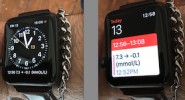Inka
Well-Known Member
- Relationship to Diabetes
- Type 1
My clinic is swapping people over from Libre 2 to Dexcom G7. I’ve never had a Dexcom before (only had my Libre for a year or so) and I’m really interested in hearing about people’s experiences of it and any tips you might have (eg best time to insert, best place to insert, any quirks I need to know, etc, etc).
I noticed that a couple of people have mention Dexcom G7 here but not many. So if anyone has one or has tried one, I’d be interested in thoughts on that specific model too. I understand it’s smaller than the G6 but that’s about all I know.
Is there a list of compatible phones for the G7? I looked on the Dexcom site but was a bit doubtful about the way the list was presented. I can’t afford to buy the wrong phone! Can you use a receiver with it rather than a phone? If you have the G7, which phone do you use? How have you found the accuracy? How good are the alarms? Any problems you’ve had?
I noticed that a couple of people have mention Dexcom G7 here but not many. So if anyone has one or has tried one, I’d be interested in thoughts on that specific model too. I understand it’s smaller than the G6 but that’s about all I know.
Is there a list of compatible phones for the G7? I looked on the Dexcom site but was a bit doubtful about the way the list was presented. I can’t afford to buy the wrong phone! Can you use a receiver with it rather than a phone? If you have the G7, which phone do you use? How have you found the accuracy? How good are the alarms? Any problems you’ve had?
Last edited:

